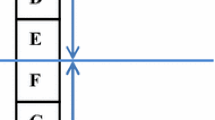Summary
The performance of copper-chrome-arsenate (CCA) and two quaternary ammonium compounds as wood preservatives was compared using a serial exposure technique, involving successive 10-week exposures in conventional soil jars. All preservative treatments were successful in preventing decay of Pinus radiata sapwood after the first exposure, but successive 10-week exposures clearly distinguished those treatments likely to offer long-term protection. The progressively increasing times of exposure with test fungi overcame the time lag for decay initiation in wood treated to preservative retentions above the toxic threshold established by conventional laboratory methods. Consequently, an additional and higher toxic threshold could be calculated. Examination of data from field stake tests suggested that a series of toxic thresholds established by a serial exposure technique could be related to preservative retentions which protect wood in the field from decay for increasing periods of time. Results of all tests are discussed in relation to the development of a laboratory procedure which may predict field performance of wood preservatives.
Similar content being viewed by others
References
American Society for Testing and Materials 1961. Standard methods of testing wood preservatives by laboratory soil-block cultures. ASTM Designation D 1413-61 Philadelphia, Pa.
Bergman, O., Henningsson, B. 1974. Field experiments with different preservatives applied by pressure. The Swedish Wood Preservation Institute. Report No. 110
Bravery, A. F. 1969. Determining the tolerance of soft-rot fungi to wood preservatives: a comparison of test methods. Material u. Organismen 3 (3): 213–227
Bravery, A. F. 1975. Microbiological assay of chemicals for the protection of wood. Building Research Establishment Current Paper CP 92/75. Princes Risborough Laboratory
British Standards Institution 1961. Method of test for the toxicity of wood preservatives to fungi, BS 838
Butcher, J. A., Drysdale, J. 1977. Relative tolerance of seven wood-destroying basidiomycetes to quaternary ammonium compounds and copper-chrome-arsenate preservatives. Material u. Organismen (in press)
Butcher, J. A., Hedley, M. E., Drysdale, J. A. 1977. Comparison of a quaternary ammonium compound and copper-chrome-arsenate as wood preservatives. Forest Prod. J. 27 (7): 22–25
Butcher, J. A., Preston, A. F., Drysdale, J. 1977. Initial screening trials of some quaternary ammonium compounds and amine salts as wood preservatives. Forest Prod. J. 27 (7): 19–22
Cockcroft, R. 1974. Evaluating the performance of wood preservatives against fungi. J. Inst. Wood Sci. 6 (6) No. 36: 2–8
Da Costa, E. W. B., Osborne, R. D. 1968. Laboratory evaluations of wood preservatives, 11. Effect of timber substrate on the performance of a copper-chrome-arsenic preservative. Holzforschung 22 (3): 81–88
Damaschke, K. 1968. Evaluation of the fungitoxicity of wood preservatives by measuring the oxygen consumption of basidiomycetes. Material u. Organismen 3 (2): 147–158
Dickinson, D. J. 1974. A new technique for screening fungicide for wood preservation. Int. Biodeterior. Bull. 10 (2): 49–51
Fahlstrom, G. B. 1975. A small stake test procedure for accelerated evaluation of wood preservatives. Proc. Amer. Wood Pres. Ass. 71: 216–220
Foster, J. B. 1977. A report on the 1976 inspection of the Whakarewarewa graveyard. New Zealand Forest Service, Forest Research Institute, Forest Products Laboratory Report No. FP/WP 87 (unpublished)
Henningsson, B. 1976. Aspects of the performance of treated woods in northern Europe. In: The Performance of Treated Wood and Untreated Durable Species. The Swedish Wood Preservation Institute, Report No. 124: 3–21
Levi, M. P. 1969a. Rapid test for evaluating the fungicidal activity of potential wood preservatives. J. Inst. Wood Sci. 4 (5) No. 23: 45–50
Levi, M. P. 1969b. The mechanism of action of copper-chrome-arsenate preservatives against wood destroying fungi. Record Brit. Wood Pres. Assoc. Annual Convention 1969: 113–127
Levi, M. P. 1975. Decay of chemically treated wood. In: Biological Transformation of Wood by Micro-organisms, ed. W. Liese. Springer Verlag, Berlin. 118–128
McQuire, A. J. 1972. Ground contact retentions for copper-chrome-arsenate preservatives. Proc. Amer. Wood Pres. Ass. 68: 22–27
Richardson, B. A. 1968. A new technique for the comparative evaluation of some organometallic wood preservatives. Int. Pest Control 10 (1): 14–19
Savory, J. G., Bravery, A. F. 1970. Collaborative experiments in testing the toxicity of wood preservatives to soft-rot fungi. Material u. Organismen 5 (1): 59–80
Smith, D. N. R. 1971. A possible method for the rapid evaluation of wood preservatives. Mitt. Dtsch. Ges. Holzfòrsch. 57: 18–22
Smith, R. S. 1969. Wood preservative toxicity evaluation using wood weight loss and fungal respiration methods. Wood Sci. 2 (1): 44–53
Smith, R. S. 1975. Automatic respiration analysis of the fungitoxic potential of wood preservatives, including an oxathiin. Forest Prod. J. 25 (1): 48–53
Author information
Authors and Affiliations
Rights and permissions
About this article
Cite this article
Butcher, J.A. Serial exposure technique for assessing performance of wood preservatives. Wood Sci. Technol. 13, 127–135 (1979). https://doi.org/10.1007/BF00368605
Received:
Issue Date:
DOI: https://doi.org/10.1007/BF00368605




